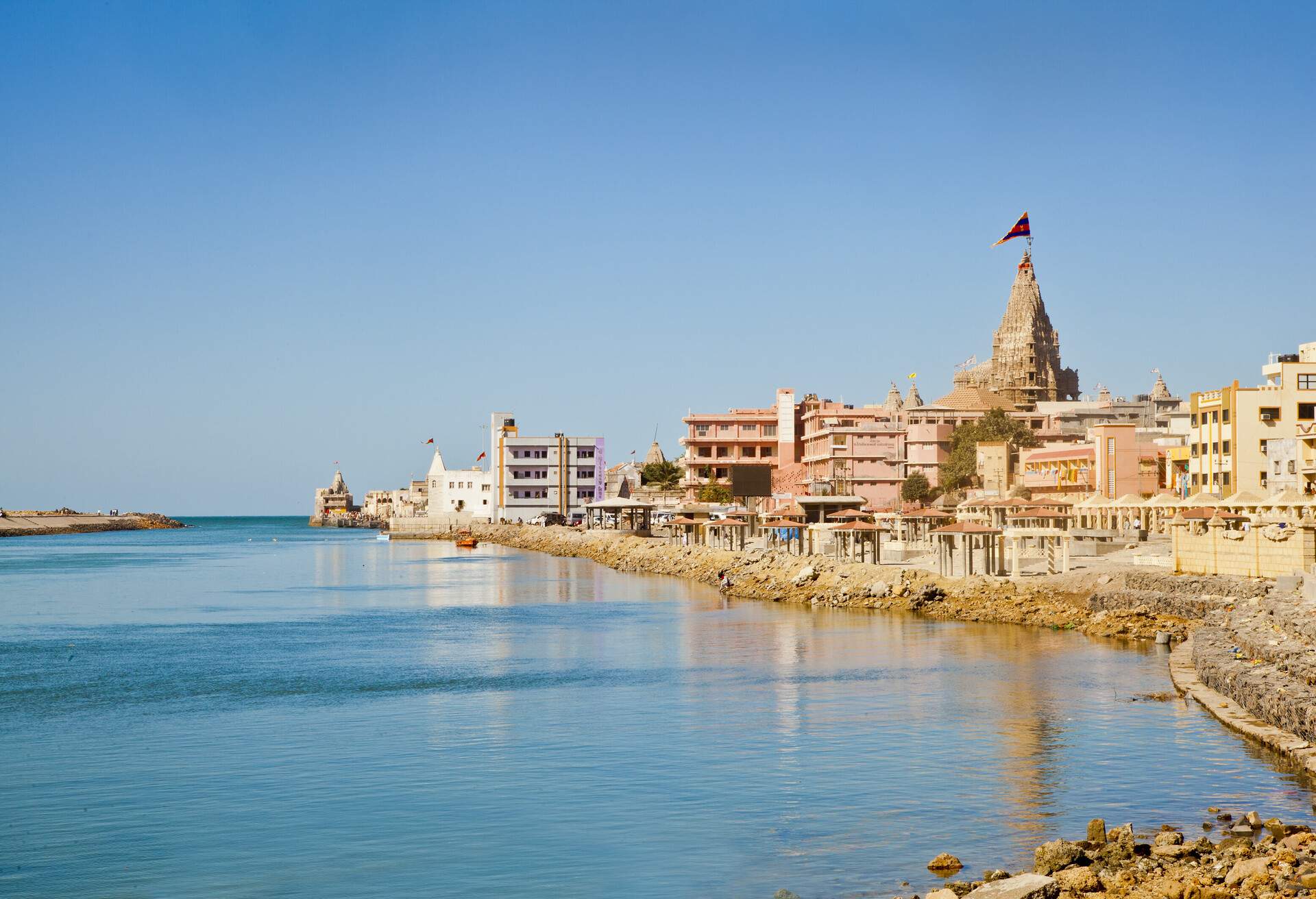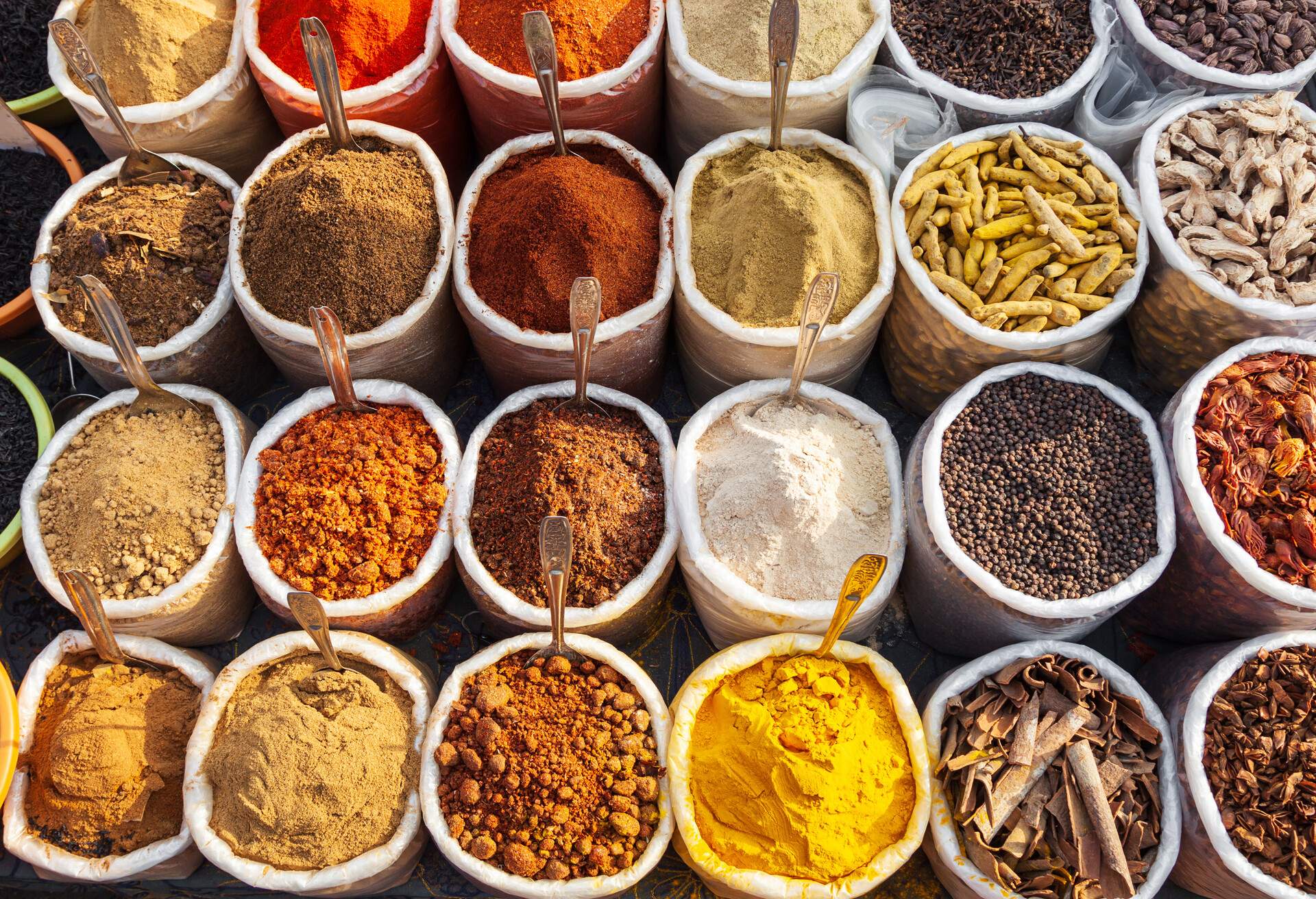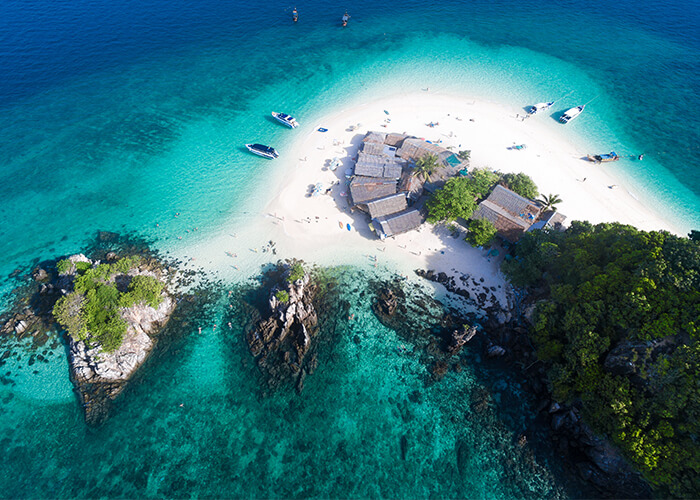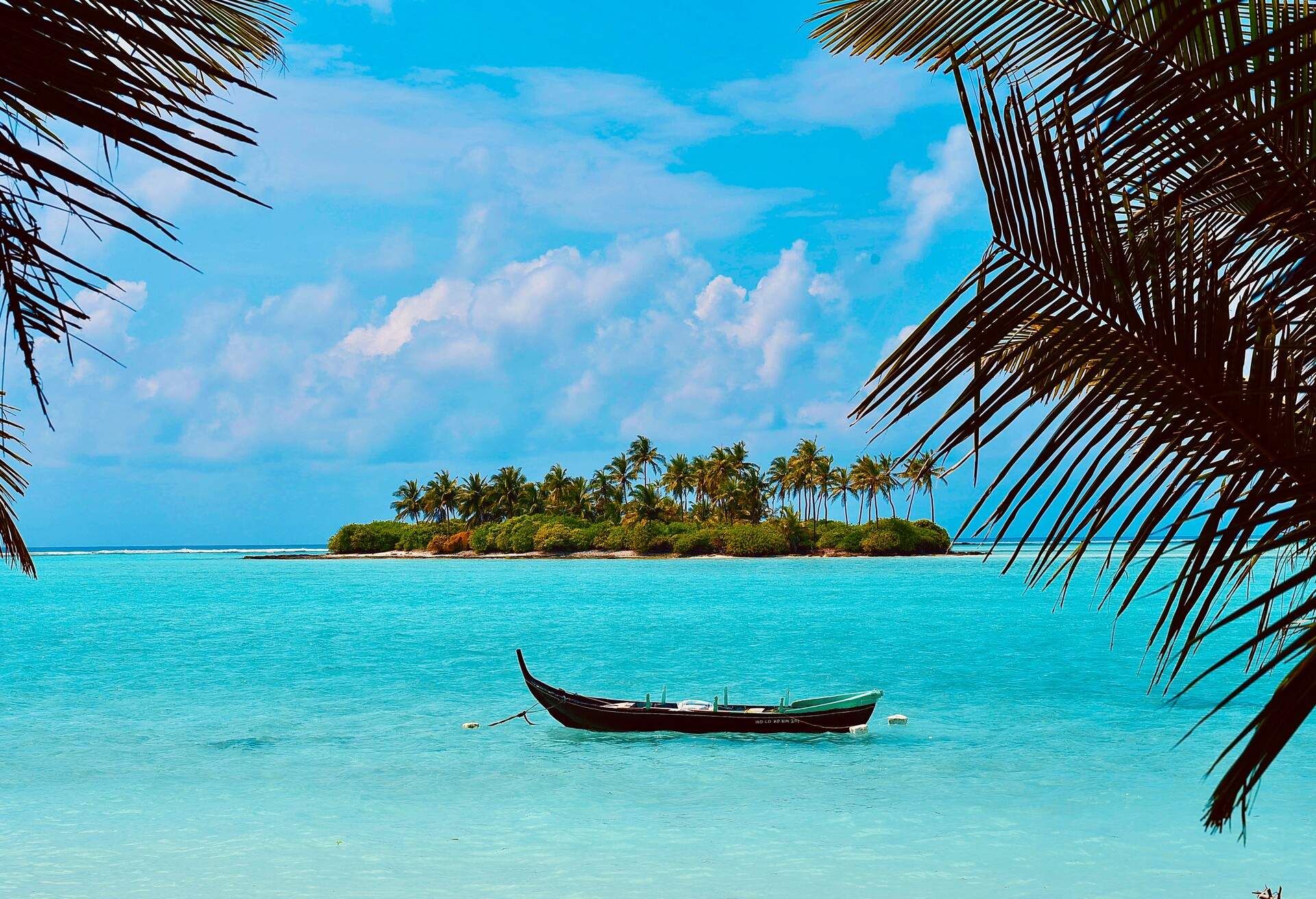Holidays in India are an opportunity to immerse yourself in a completely different culture and explore a wealth of exotic tourist attractions. The country has a very strong religious heritage that still plays a significant role in everyday life, influencing all aspects of society. As in other ancient cultures that persist to this day, this is reflected in the nation’s architecture. Nowhere is it more apparent than in the many temples in India.
India has a rich blend of different religions. The two main faiths are Hinduism and Sikhism, with Buddhism and Jainism adding to the fusion. These are some of the oldest religions on earth, so visiting the ancient temples in India is as much a journey into the distant past as it is an insight into the modern Indian way of life. Here’s a guide to help you find the most interesting and celebrated ones.
For more ideas to make the best of your trip to the country, you can also read our broader Travel Guide to India.
Temples in India: Sun Temple, Odisha
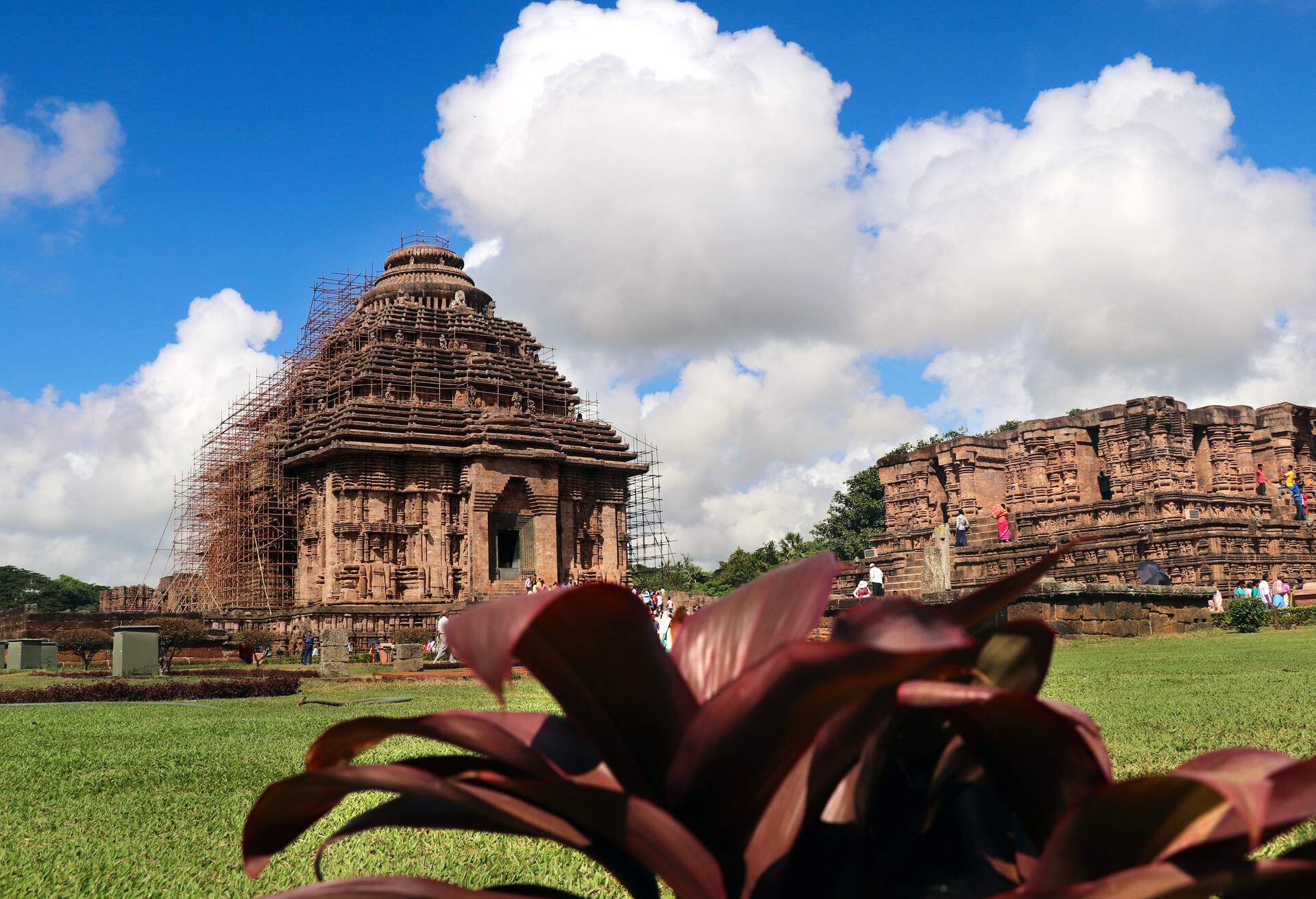
You’ll find the Sun Temple in the village of Konark, in the Puri region of Odisha. It’s surrounded by a beautifully landscaped garden.
The ancient legend of Surya
This temple expresses devotion to Surya, the Indian God of Sun. It was built by the regional king, Narasimhadeva, in the 13th century. Designed to resemble a chariot drawn by seven horses, it’s one of the more unusual old temples in India. It’s also a part of one of the country’s ancient Hindu legends.
The story has it that Lord Krishna, one of the main Hindu deities, punished his son Samba with leprosy. In a show of penance, Samba dedicated his life to worshipping Surya, who healed him of his affliction. In gratitude, legend tells that Samba built the Sun Temple in dedication to Surya. Today the building stands intact and is one of the major temples in India on the tourist calendar.
Badrinath Temple, Uttarakhand
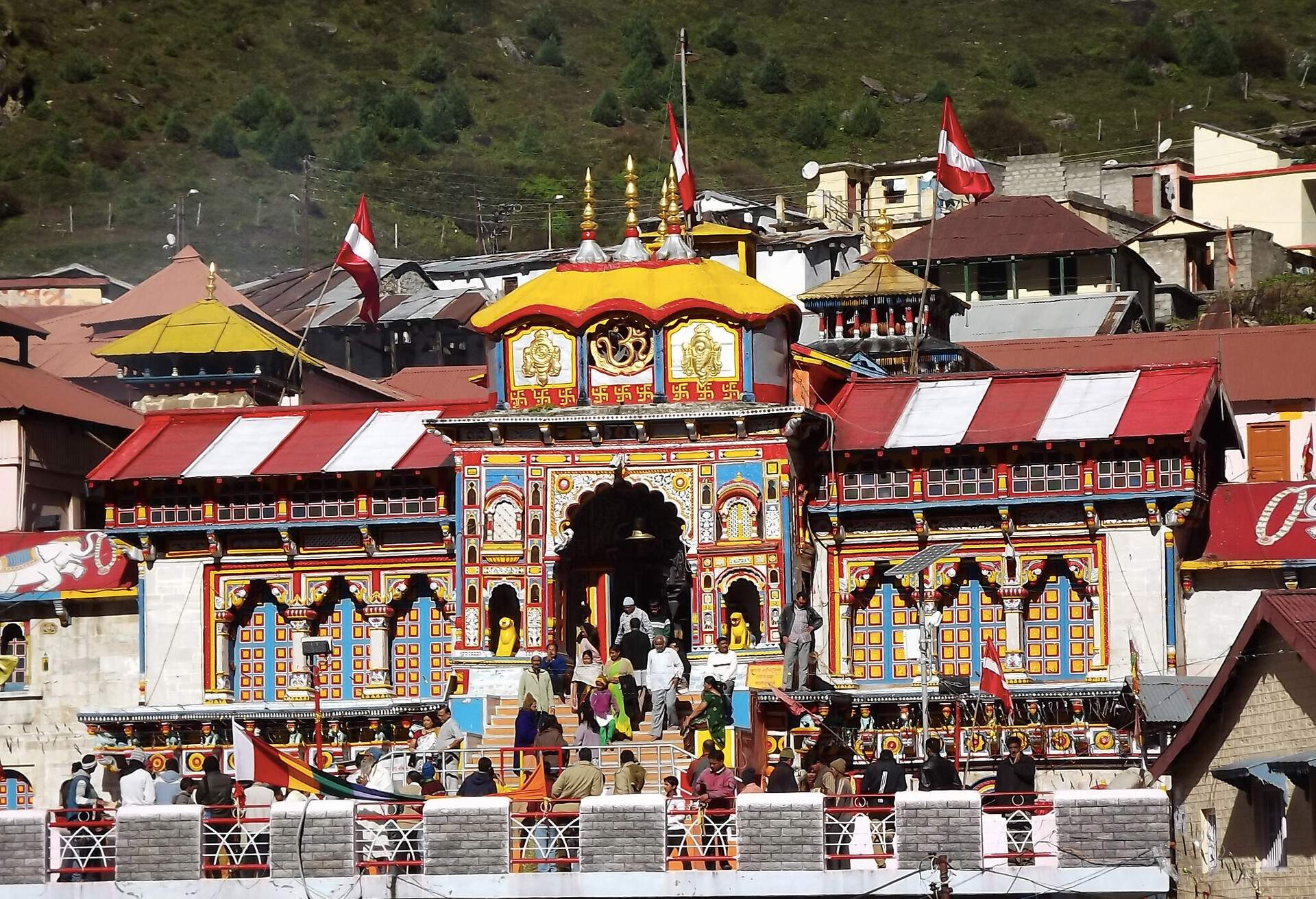
One of the most celebrated Hindu temples in India, this is known as the home of Lord Badrinath. You’ll find it near the Alaknanda River in the Chamoli area of the Uttarakhand district.
An important modern pilgrimage site
Badrinath Temple is one of the four pilgrimage sites that make up the Char Dham Yatra. These are the most sacred Hindu shrines, attracting devotees from around the world each year. This temple is also one of the many dedicated to Lord Vishnu. It’s only open to visitors between April and November, as the weather is too harsh during the remaining months.
Annual temple festivals
This temple is also the site of two important annual religious festivals. June sees the eight-day Badri-Kedar Festival, which celebrates the local Uttarakhand culture and traditions. In September, you can visit the Mata Murti-Ka-Mela Festival. The entire month is dedicated to the worship of Lord Badrinath’s revered mother.
Brihadeeswara Temple, Tamil Nadu
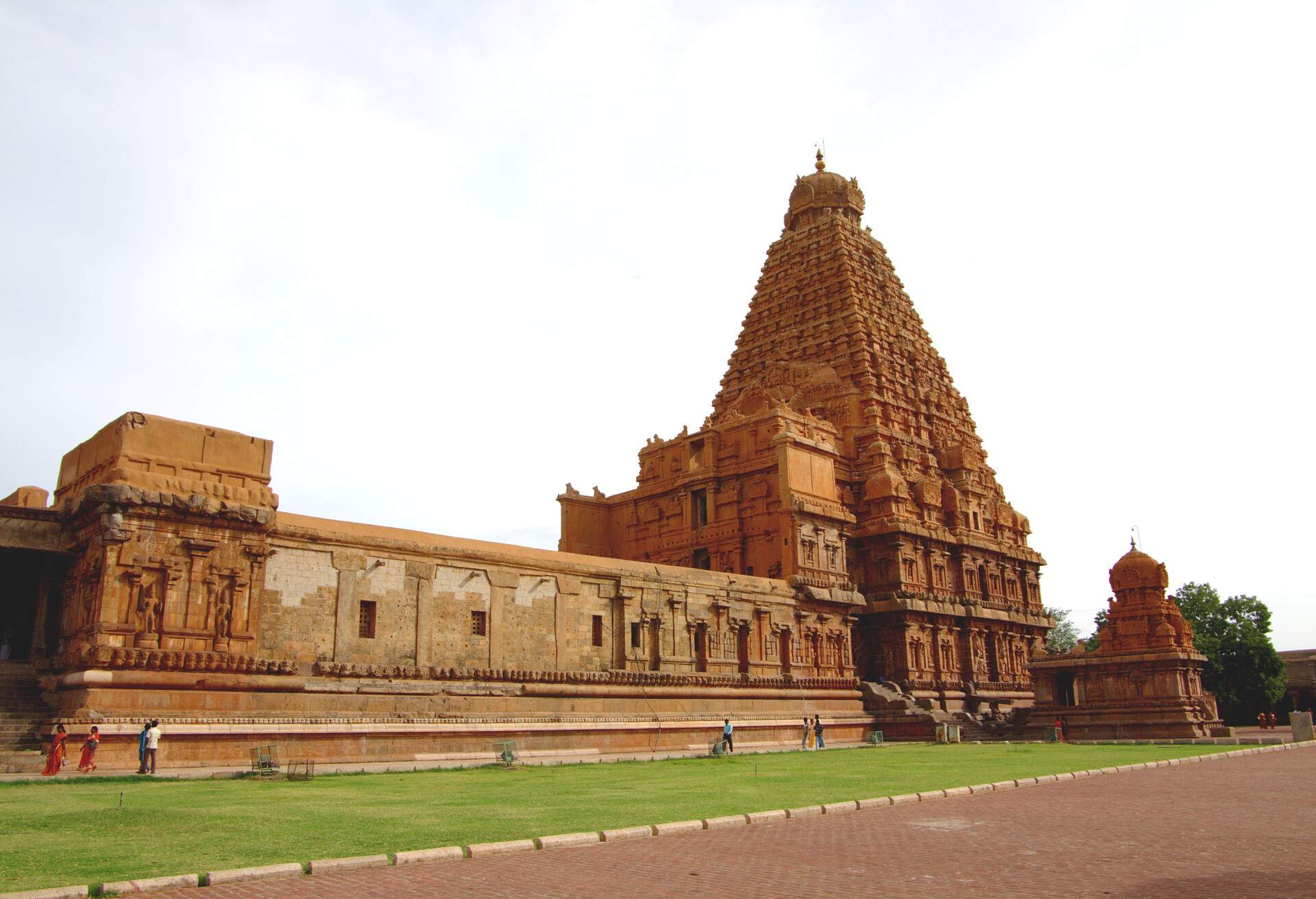
This is one of the largest temples on the South India map, in the town of Thanjavur. It’s also a UNESCO World Heritage Site.
Age-old appreciation of art
Brihadeeswara Temple was built in the 11th century by Raja Raja Chola I, one of the Chola emperors. They were known for their artistic appreciation and this is reflected in the temple’s design. Its construction followed the principles of Vaastu Shastra, which calls for holy places to be made solely from granite stone. The intricate stonework is in reverence to Lord Shiva, another major Hindu deity.
Shri Padmanabhaswamy Temple, Kerala
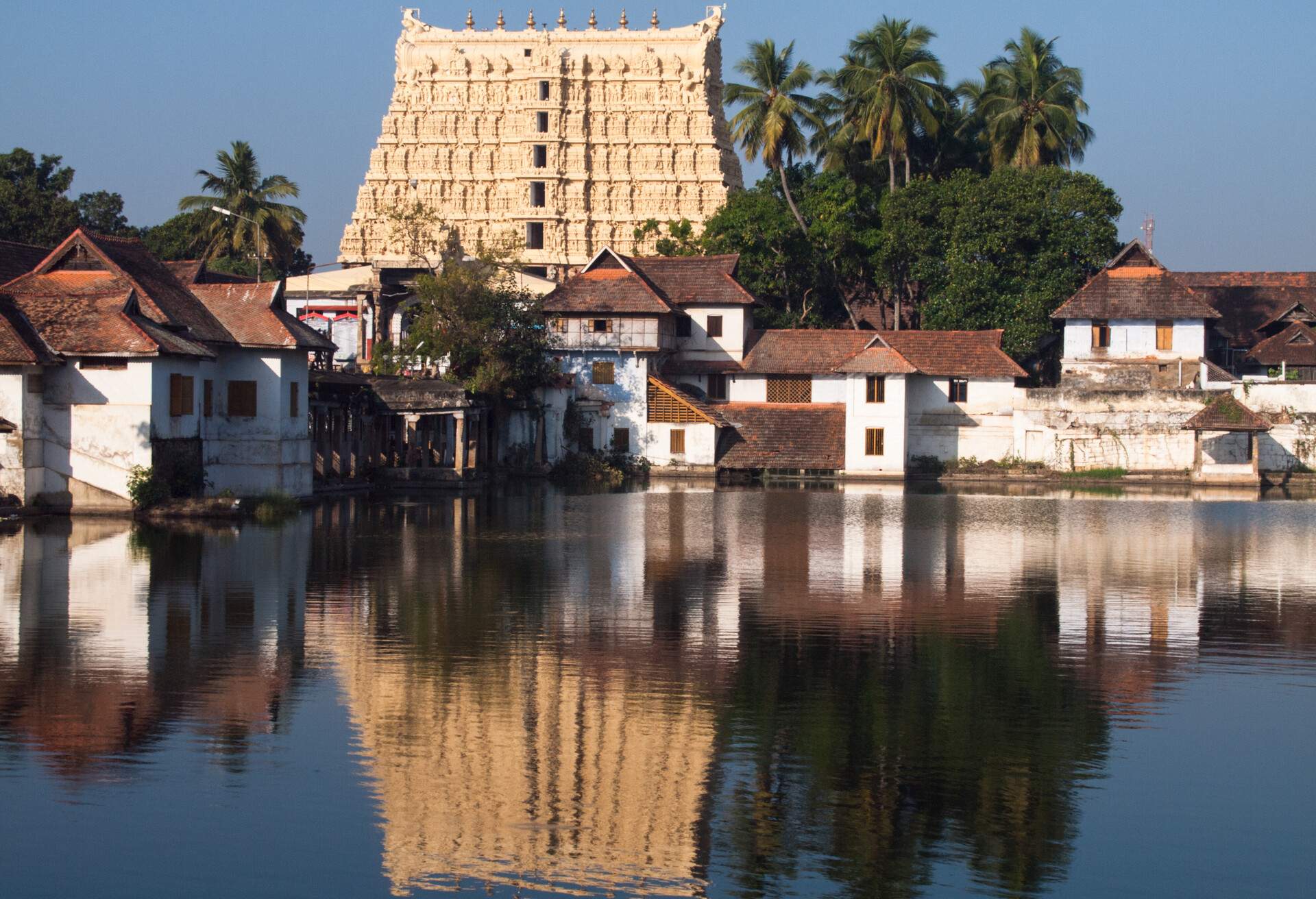
Travel to the city of Thiruvananthapuram to see Shri Padmanabhaswamy Temple. It’s known as the richest in the country, and is one of the major temples in Kerala, India. It’s also one of the most sacred, as only Hindus may enter it. However, it’s still worth visiting to see its magnificent façade.
The Temple of Hooded Serpents
Shri Padmanabhaswamy depicts Lord Vishnu in a deep yogic trance, poised on five hooded serpents. It also celebrates the supreme Hindu trinity of Vishnu, Brahma and Shiva. Lord Brahma shown sitting on a lotus flower blossoming from the navel of Lord Vishnu.
Meenakshi Temple, Tamil Nadu
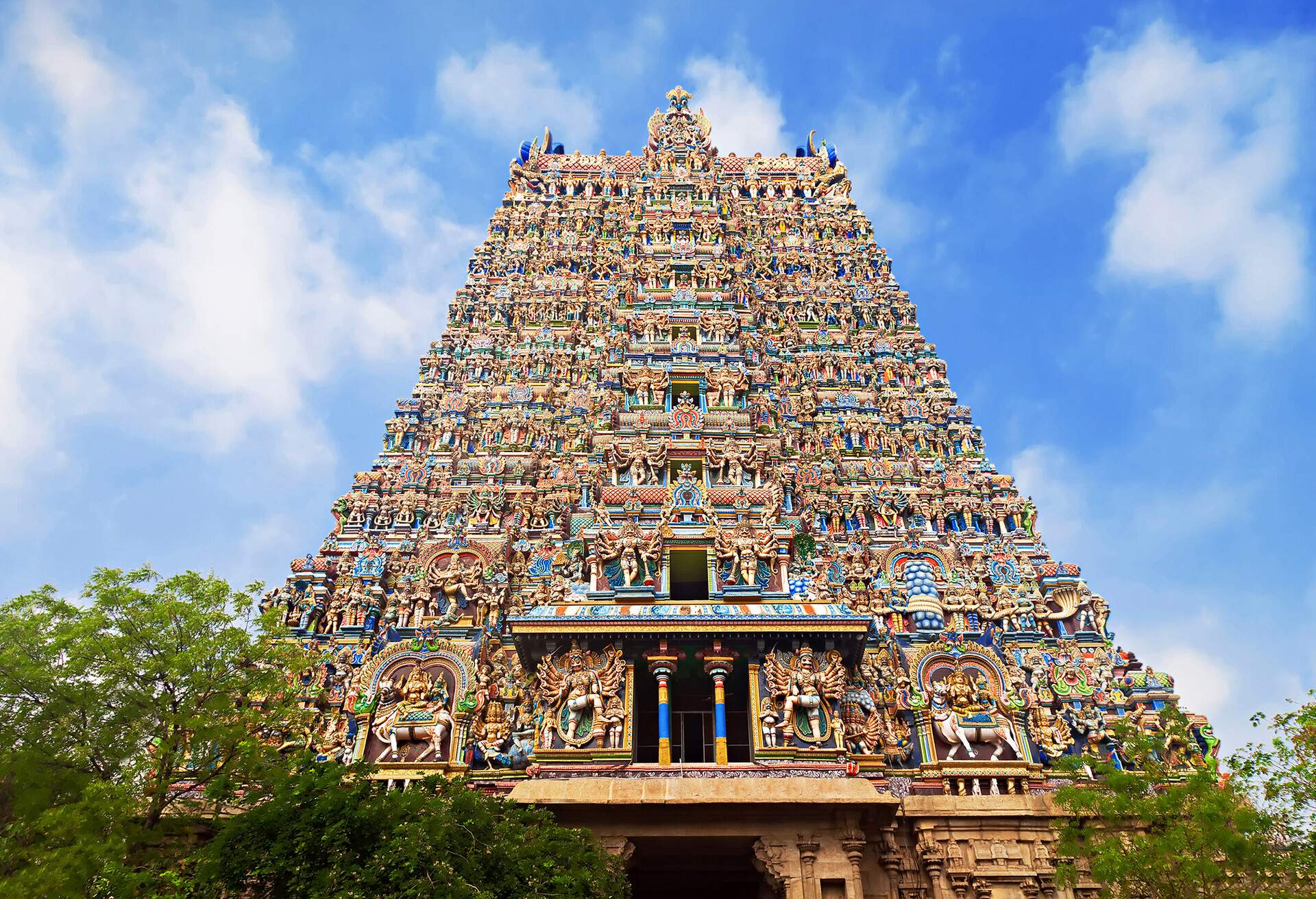
This is one of the most fascinating and colourful temples in Madurai, India. It was a nominee for the “New Seven Wonders of the World”, and is well worth visiting.
Home of the Golden Lotus Tank
It’s customary to take a quick dip in the temple’s Golden Lotus Tank before entering the main shrine. According to legend, Lord Vishnu created this pond even before the temple was built. The awe-inspiring main hall of the temple contains almost a thousand pillars. Each is distinct from the other, carved with intricate figurines.
Sri Mangeshi Temple, Goa
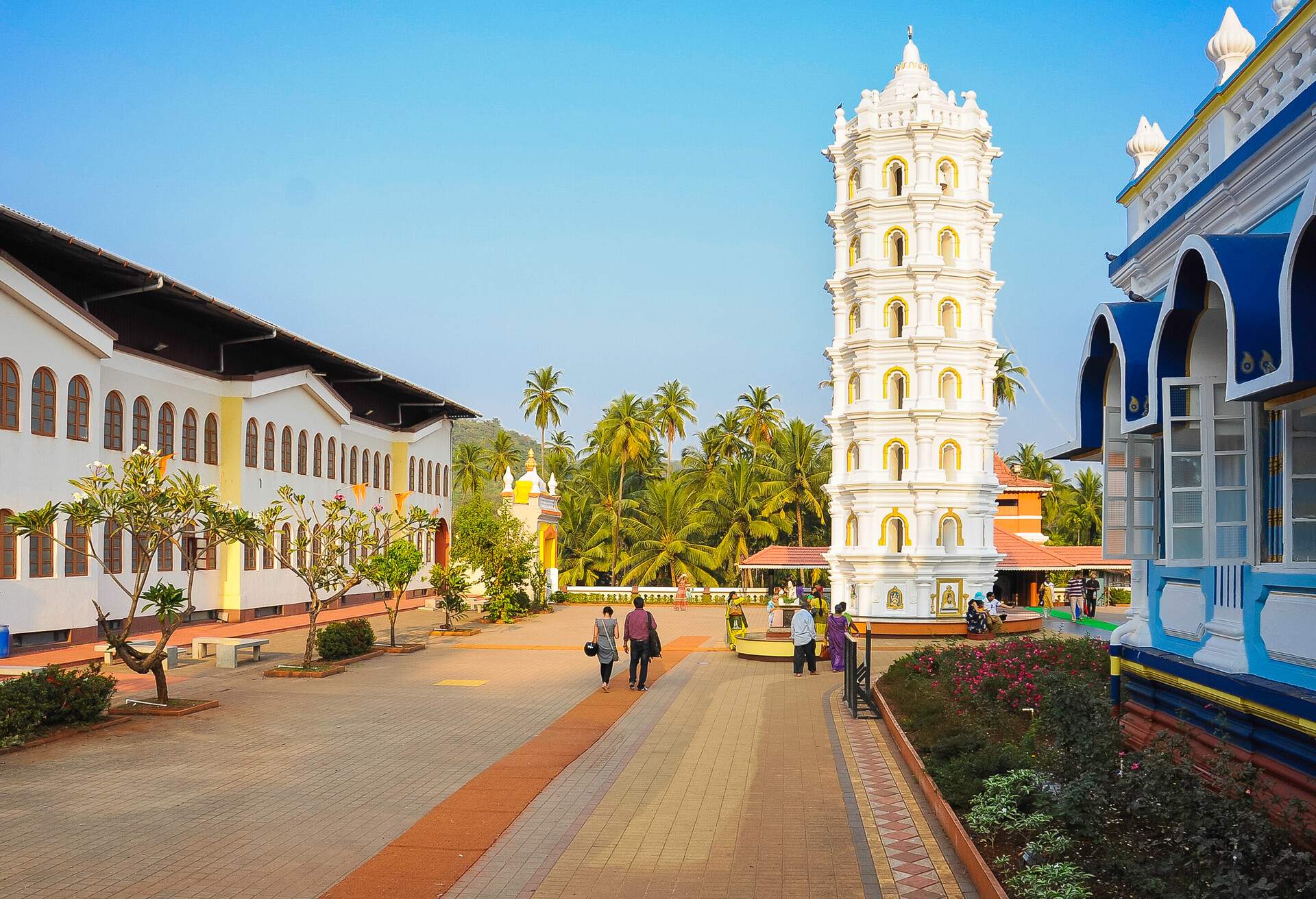
While the region’s reputation as a party destination has somewhat overshadowed its religious and cultural heritage, there are also plenty of famous temples in Goa, India. Mangeshi Temple is among the most opulent.
A fascinating temple complex
Sri Mangeshi Temple is part of an enticing complex that also includes a seven-storey lamp tower in the shape of an octagon, called a “deep stambha”. On Monday nights there’s a weekly procession that culminates in devotees placing oil lamps in its windows, creating an unforgettable sight. The centrepiece of this parade is the icon of Lord Mangesh carried in a palanquin. This temple is one of the must-see religious attractions in Goa, as it’s the only one dedicated to Lord Mangesh.
Somnath Temple, Gujarat
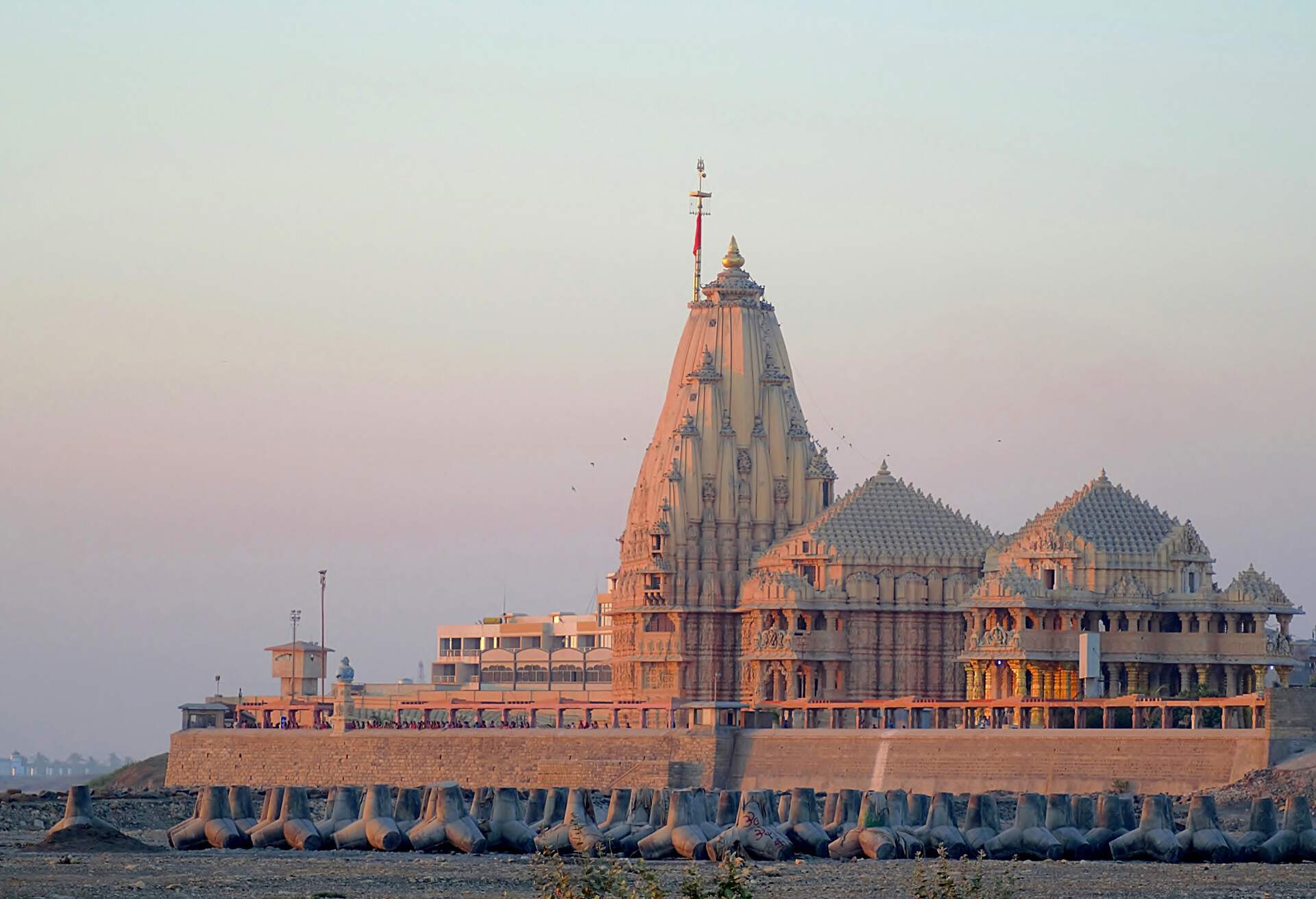
This is one of the most famous temples in India, and also one of the oldest pilgrimage sites in the country. Its name translates as “Protector of the Moon God”, in reference to Soma, the Indian God of the Moon. Legend tells that Soma built the temple in homage to Lord Shiva, who cured his afflictions.
Sights and sounds for tourists
This beautifully ornate temple offers other attractions for tourists. Here you’ll find the Somnath museum and the famous Junagadh Gate. A more modern feature is a sound and light show that takes place at the temple and the nearby beach. To reach it, head to the city of Prabhas Kshetra in the Gujarat district.
Vaishno Devi Temple, Jammu and Kashmir
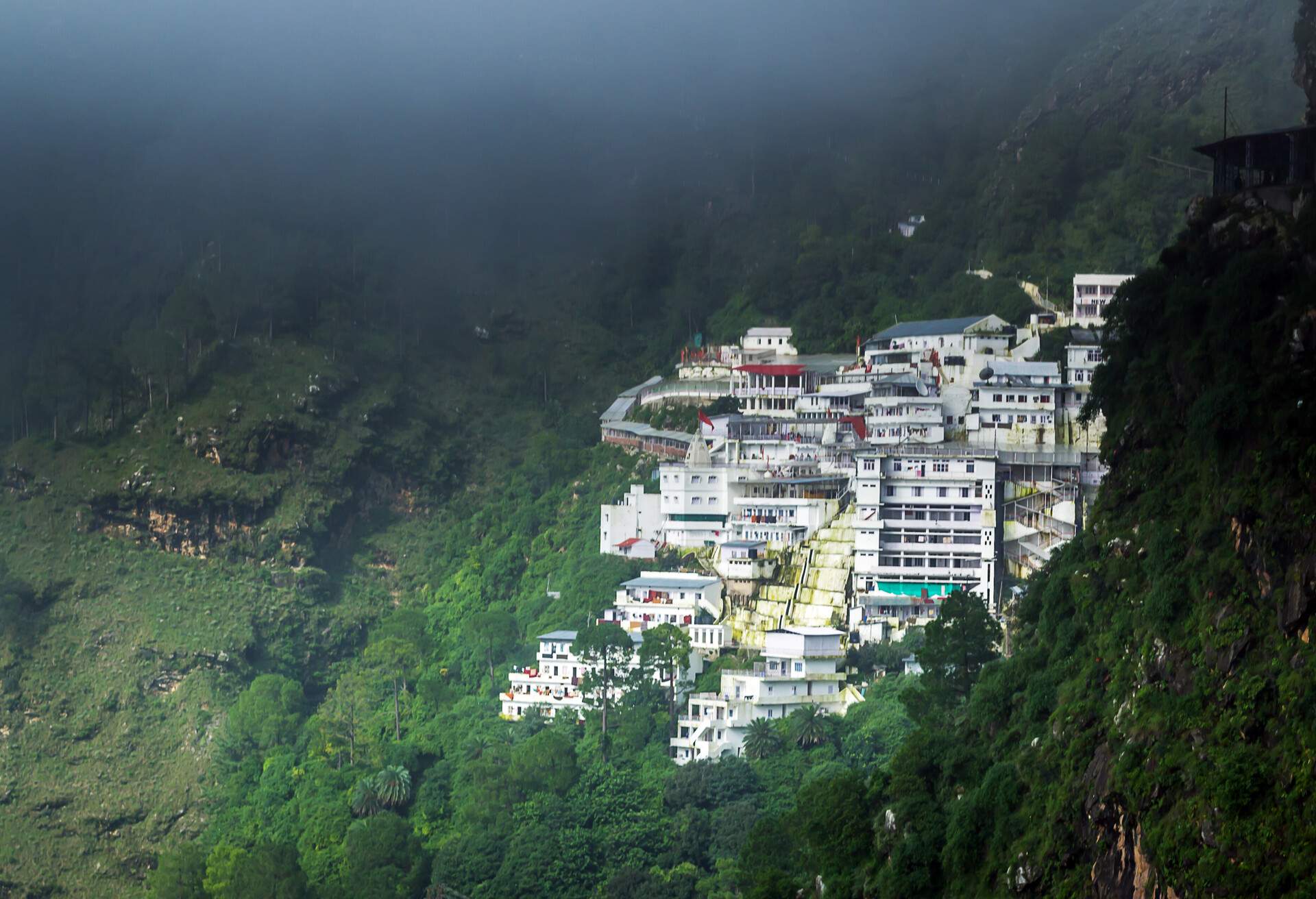
Of all the temples in India, this is one of the most holy sites, and a significant destination for Hindu pilgrims. You’ll find it on the Trikuta Mountain in the district of Jammu and Kashmir.
Beheading the Black Magician
According to myth, the Hindu Mother Goddess, Vaishno Devi, was being pursued by a black magician called Bhairo Nath, who wanted to marry her. She fled to a shrine in the mountains, where she beheaded him. The magician begged forgiveness, and the Goddess accepted this, and rewarded him by saying that anyone who makes a pilgrimage to the shrine must also visit his Bhairo Nath Temple. As a result, thousands of pilgrims make the journey to this day.
Kedarnath Temple, Uttarakhand
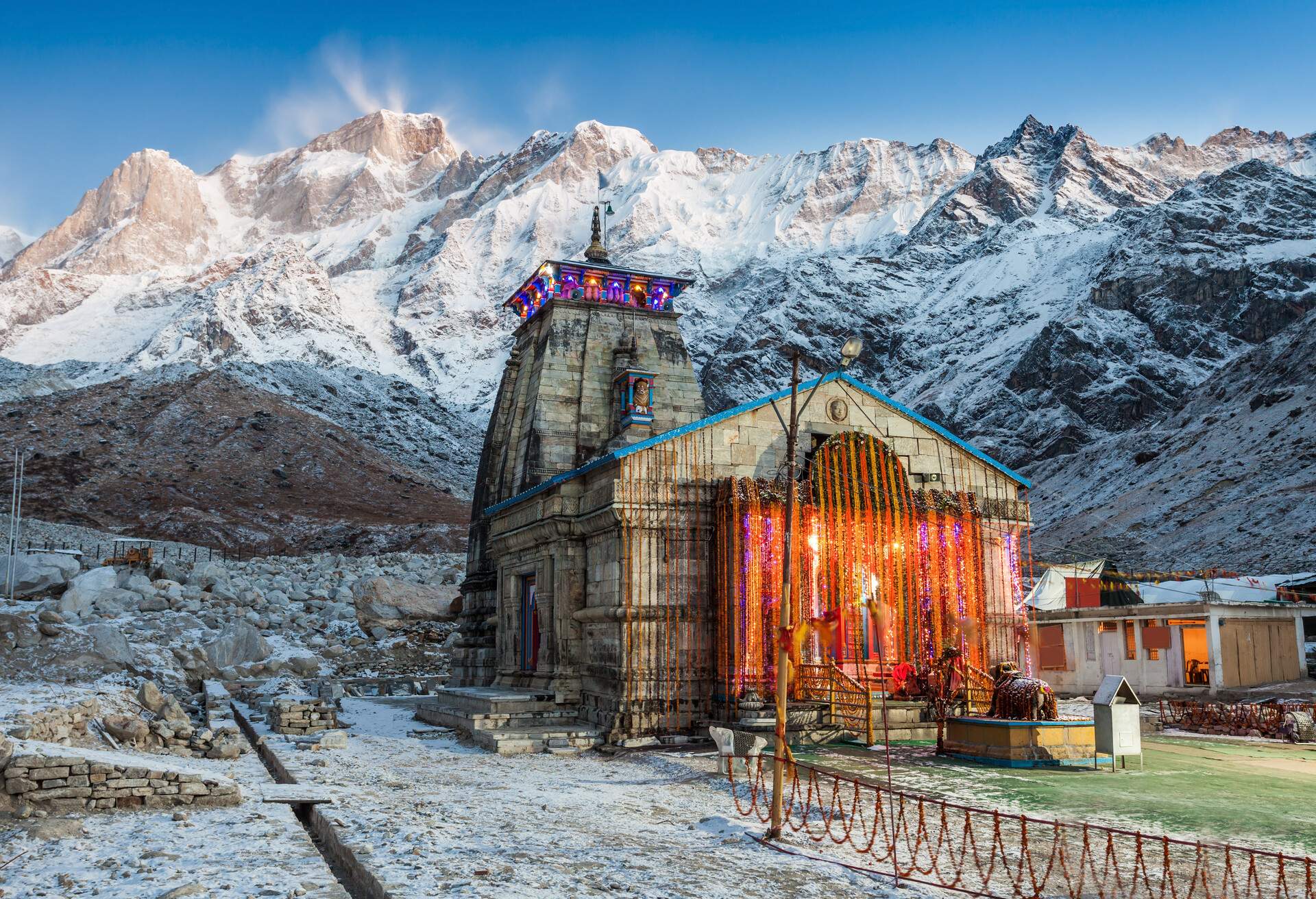
This temple is high up in the Himalayas, surrounded by snowy peaks. Due to the severe weather in winter you can only visit during the summer months.
One of the world’s most sacred shrines
As the holy abode of Lord Shiva, there are few temples in India as holy as this. A smallish building, it was built by the Pandavas as a way of atoning for sin during the epic Mahabharata saga. It was later restored in the 8th century and is one of the Chota Char Dhams of Uttarakhand. If you want to visit, be prepared for a hike of about 9 miles to reach it.
Golden Temple, Punjab
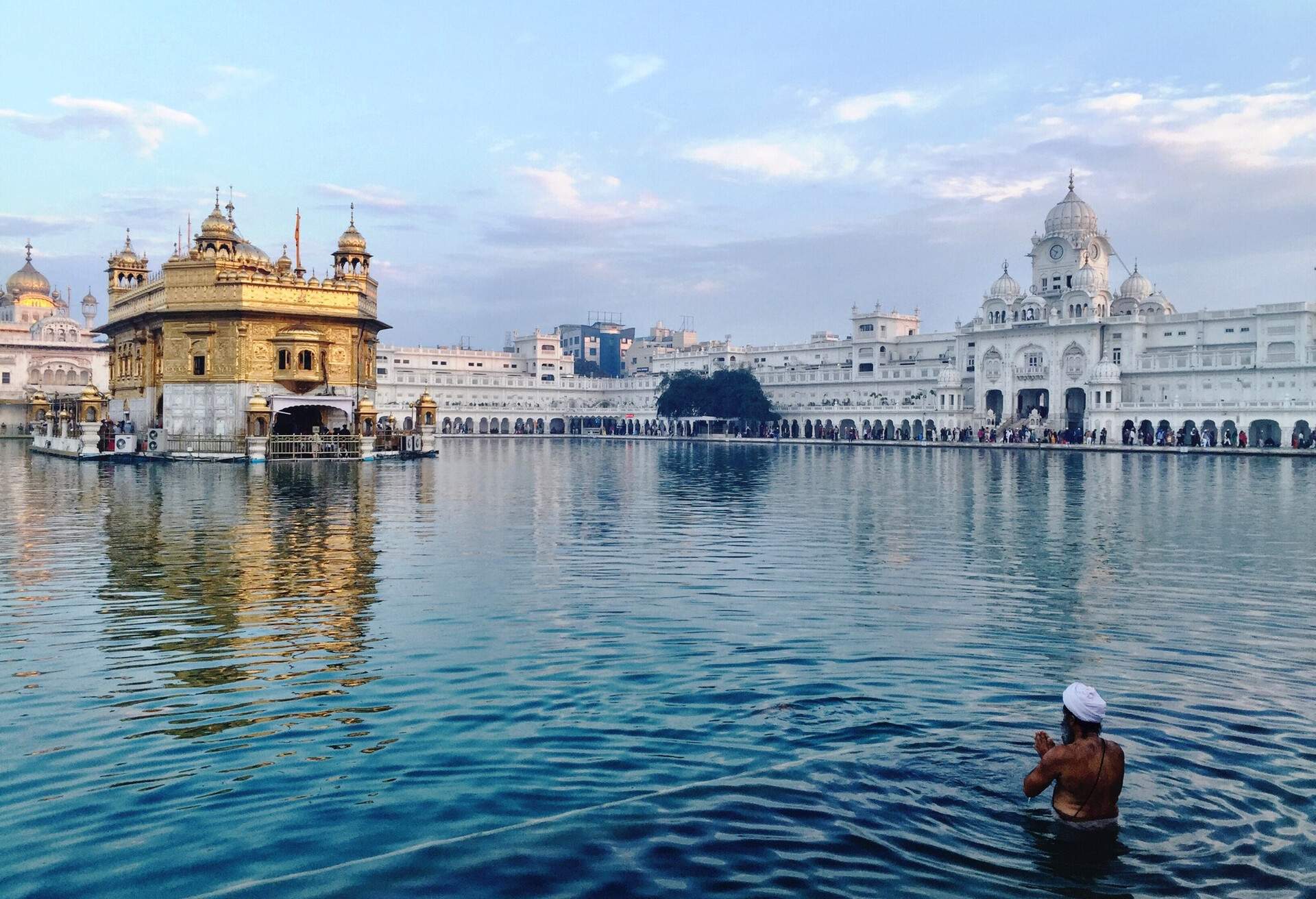
Also known as Sri Harmandir Sahib, this is a Sikh temple and the most significant pilgrimage site in Amritsar.
Open to people of any faith
The Golden Temple welcomes people of any faith who share the values of humility and equality. It has four doors, each facing a primary compass direction. This gilded building surrounded by a moat is admired for its beautiful architecture. It also has special religious significance, in that the Guru Granth Sahib, the Sikh holy book, was first placed here after it was written.
Lingaraja Temple, Odisha
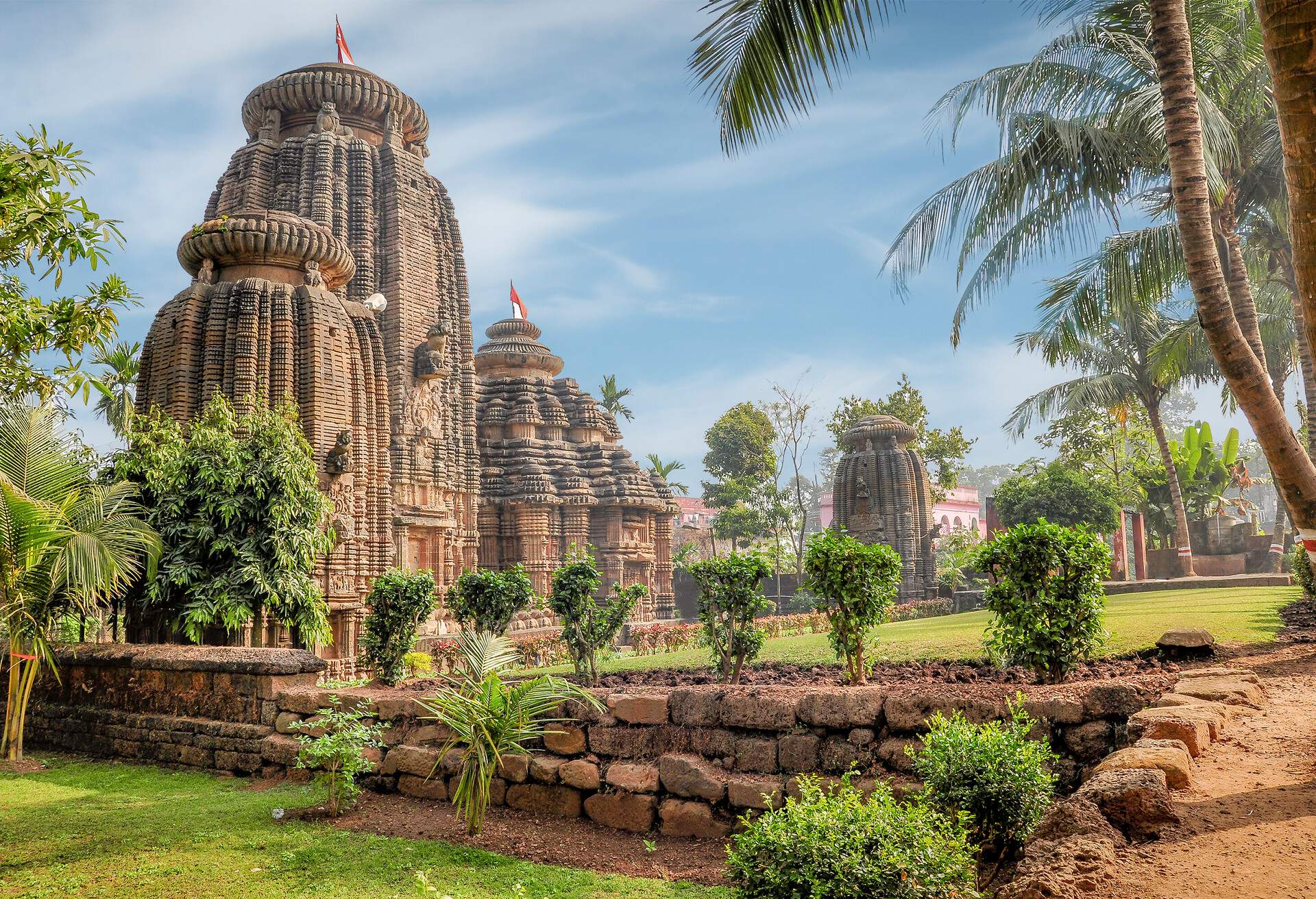
Odisha is known as the Temple City of India, and this is one of the largest and oldest to be found there.
Set on a healing lake
Lingaraja Temple verges on a lake believed to have healing powers, known as Bindu Sagar. It’s dedicated to Lord Vishnu and Lord Shiva, a godly combination that devotees call “Harihara”. The temple is both a religious site and a historical attraction. Non-Hindus aren’t allowed inside, but tourists still flock to admire the wonderful architecture from outside the perimeter.
Kashi Vishwanath Temple, Uttar Pradesh
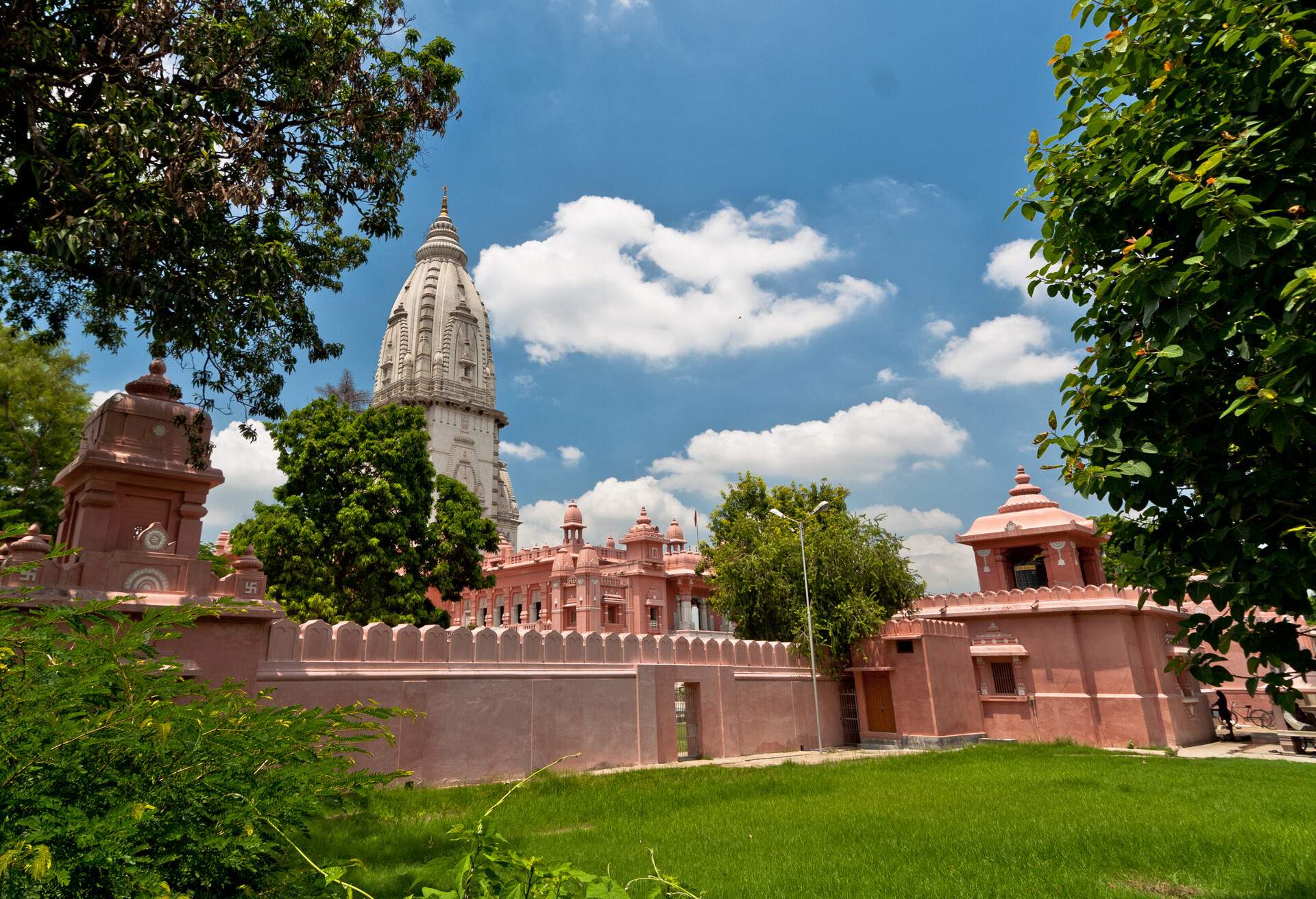
The city of Varanasi lays claim to being one of the oldest surviving urban settlements in the world, and here you’ll find Kashi Vishwanath Temple. It’s one of the most popular temples in India to visit.
Attaining “moksha”
Kashi Vishwanath Temple is the most sacred of the 12 jyotirlingas dedicated to Lord Shiva in India. It is said that visiting this temple once is equal to visiting all 11 others. It’s also believed that going to the temple is one of the ways to achieve the ultimate liberation of the soul, a spiritual state known as “moksha”. The temple is located on the western bank of the Ganges River.
Khajuraho Temple, Madhya Pradesh

Part of a UNESCO World Heritage Site that covers around 8 square miles, Khajuraho Temple is the largest and most famous in this complex.
Erotic carvings and a dance festival
Khajuraho Temple is built entirely from sandstone, and is famous for the erotic carvings on its walls. It’s one of 20 temples that occupy a sprawling complex dedicated to both Hinduism and Jainism. It was built between the 10th and 12th centuries. Visit in February when the annual Khajuraho Dance Festival is held, celebrating all the classical Indian dance forms.
Laxminarayan Temple, Delhi
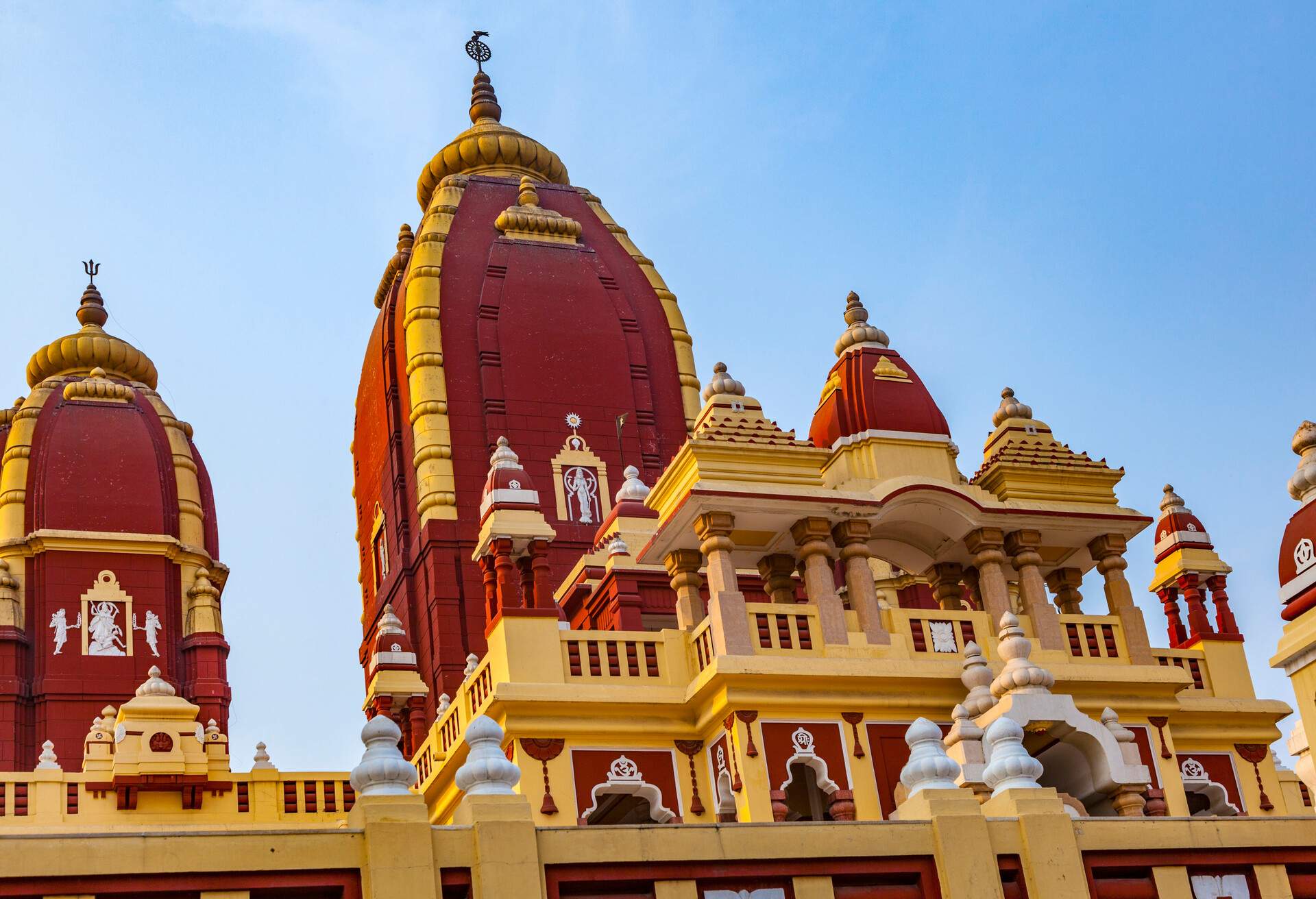
This is the one of the main temples in India dedicated to Laxminarayan, who is the incarnation of Lord Vishnu when he appears with his consort, the Goddess Lakshmi.
The temple of Gandhi
Mahatma Gandhi inaugurated Laxminarayan Temple, which was only built relatively recently, in 1939. It’s a major tourist Delhi tourist attraction, covering just under 8 acres. The site also has smaller shrines devoted to other Indian deities, including Lord Ganesh, Lord Krishna and Lord Shiva. You can also wander around the large garden with its ornate fountains.
Sri Ranganathaswamy Temple, Karnataka
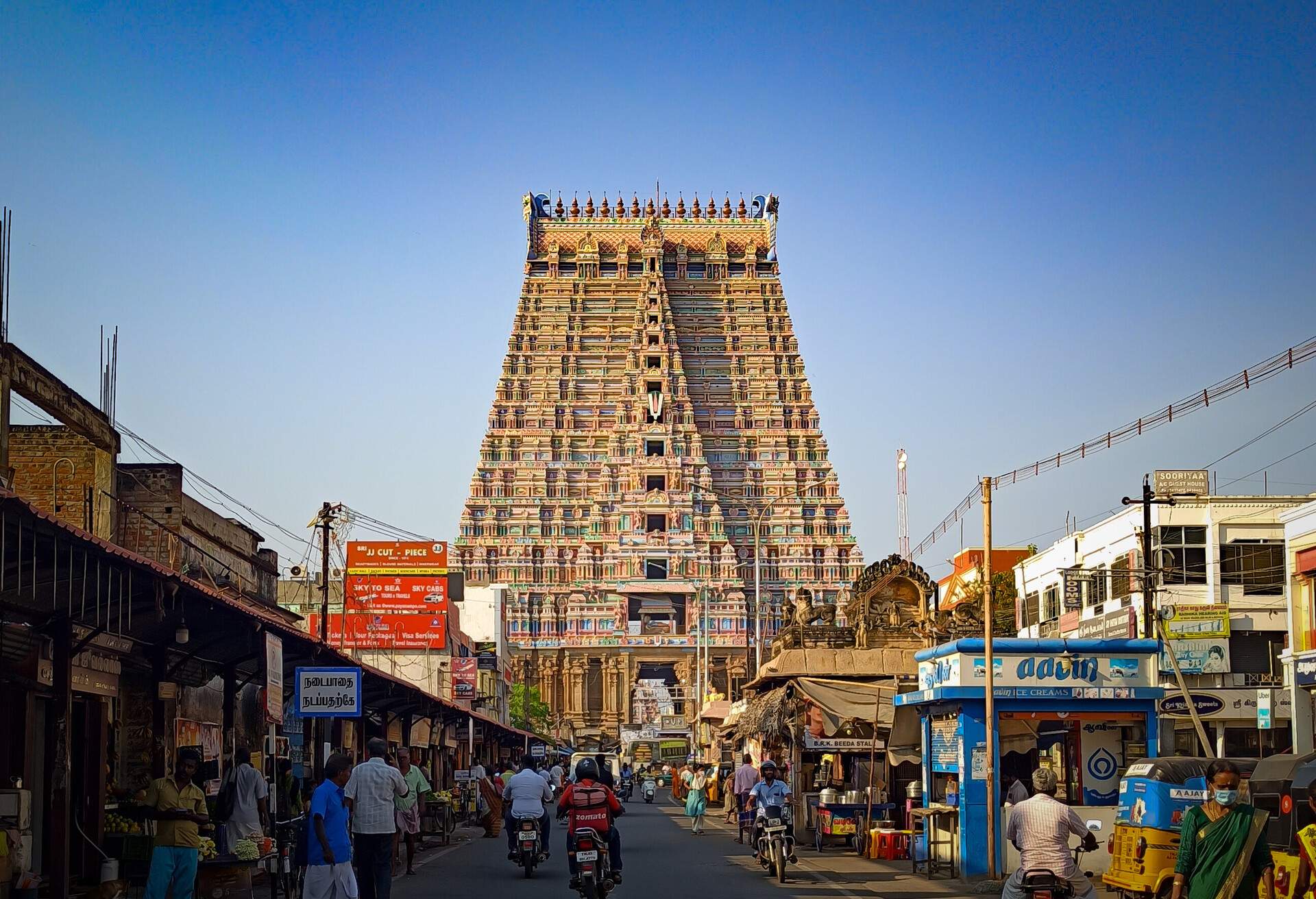
Sri Ranganathaswamy Temple is one of the five most sacred temples in India that together make up what’s known as the Pancharanga Kshetram. It’s situated in the city of Srirangam in the Karnataka district.
The world’s largest functioning temple
Built and consecrated in 984 CE, this is the largest functioning temple in the world. It attracts pilgrims and tourists from across the globe. In the temple’s sanctum you can see a representation of Lord Vishnu posed under the seven hoods of his personal cobra, Adisesha. His consort, Goddess Lakshmi, sits at his feet.
Neelkanth Mahadev Temple, Uttarakhand
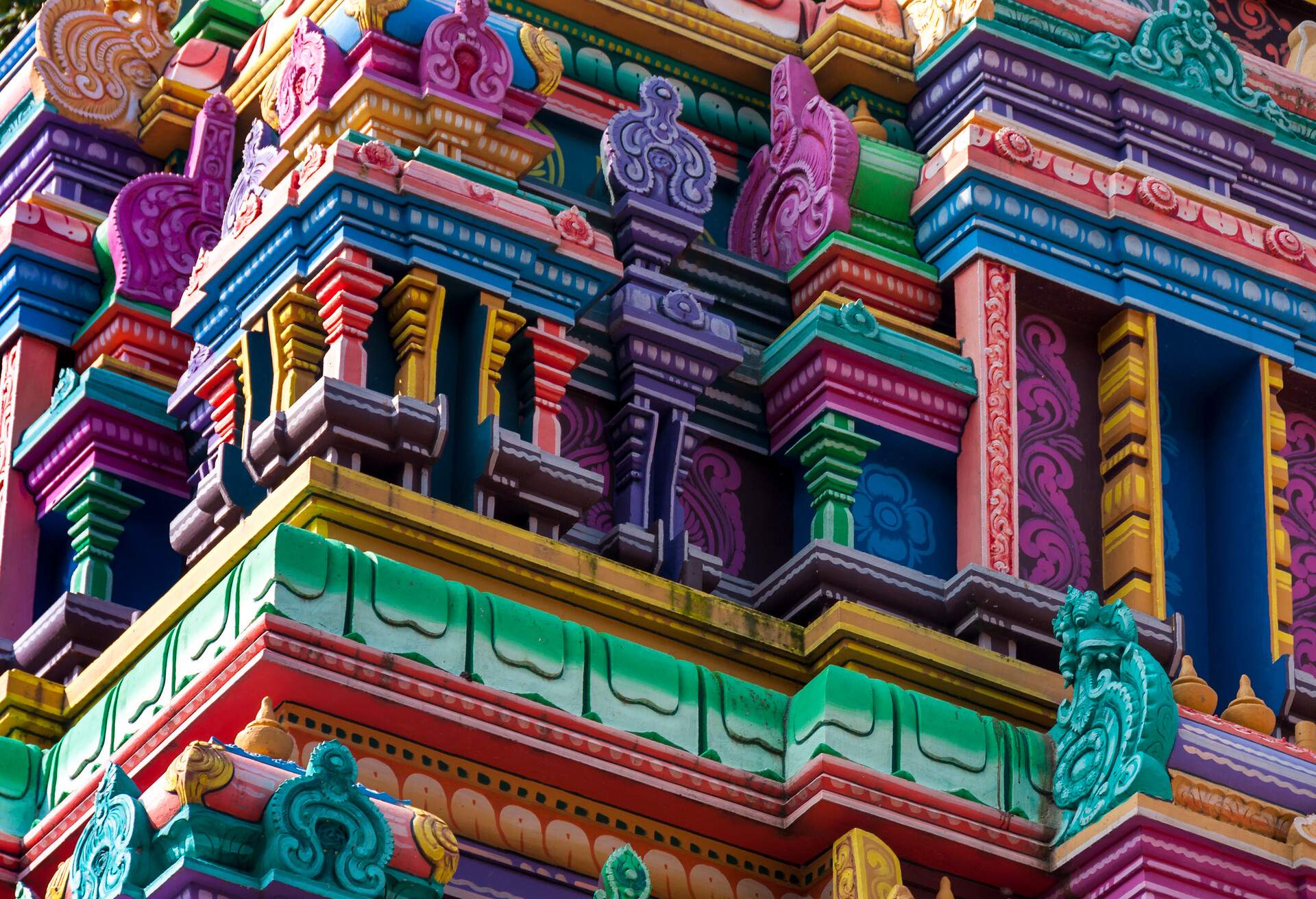
This is a wonderfully colourful tiered temple set in the valleys around the town of Rishikesh. It’s devoted to one of the many incarnations of Lord Shiva, this one known as Nilkanth, and is a very important pilgrimage site for Hindu believers.
The potion of immortality
Legend tells that a great battle was fought between the Gods, known as the Devas, and the demons, known as Asuras. This was for control of the potion of immortality. To save the world from an apocalypse, Lord Shiva drank a poison that came with the potion on the site where the temple now stands.
Mukteswara Temple, Odisha
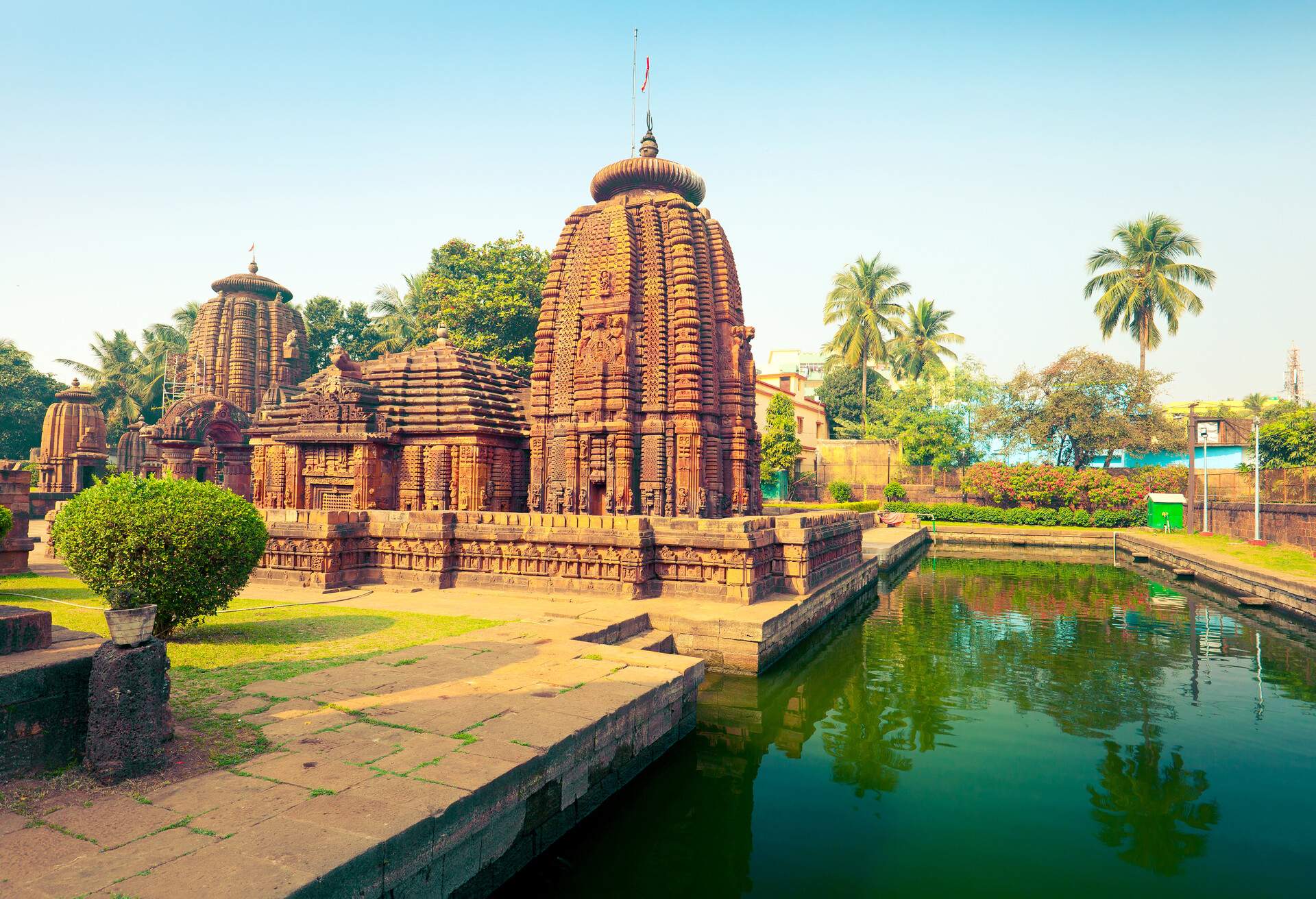
Yet another of the temples in India located in the Temple City of Odisha, this one is also devoted to Lord Shiva, this time celebrating his role as the Lord of Spiritual Freedom.
The gem of Odisha architecture
Mukteswara Temple is known as the jewel of Odisha architecture. It has a more experimental design than most of the others you’ll come across in the country. Its most famous feature is its arched gateway carved with Buddhist scriptures. If you visit the temple in January, you’ll be in time to watch the annual Mukteswar Dance Festival held here.
Kamakhya Temple, Assam
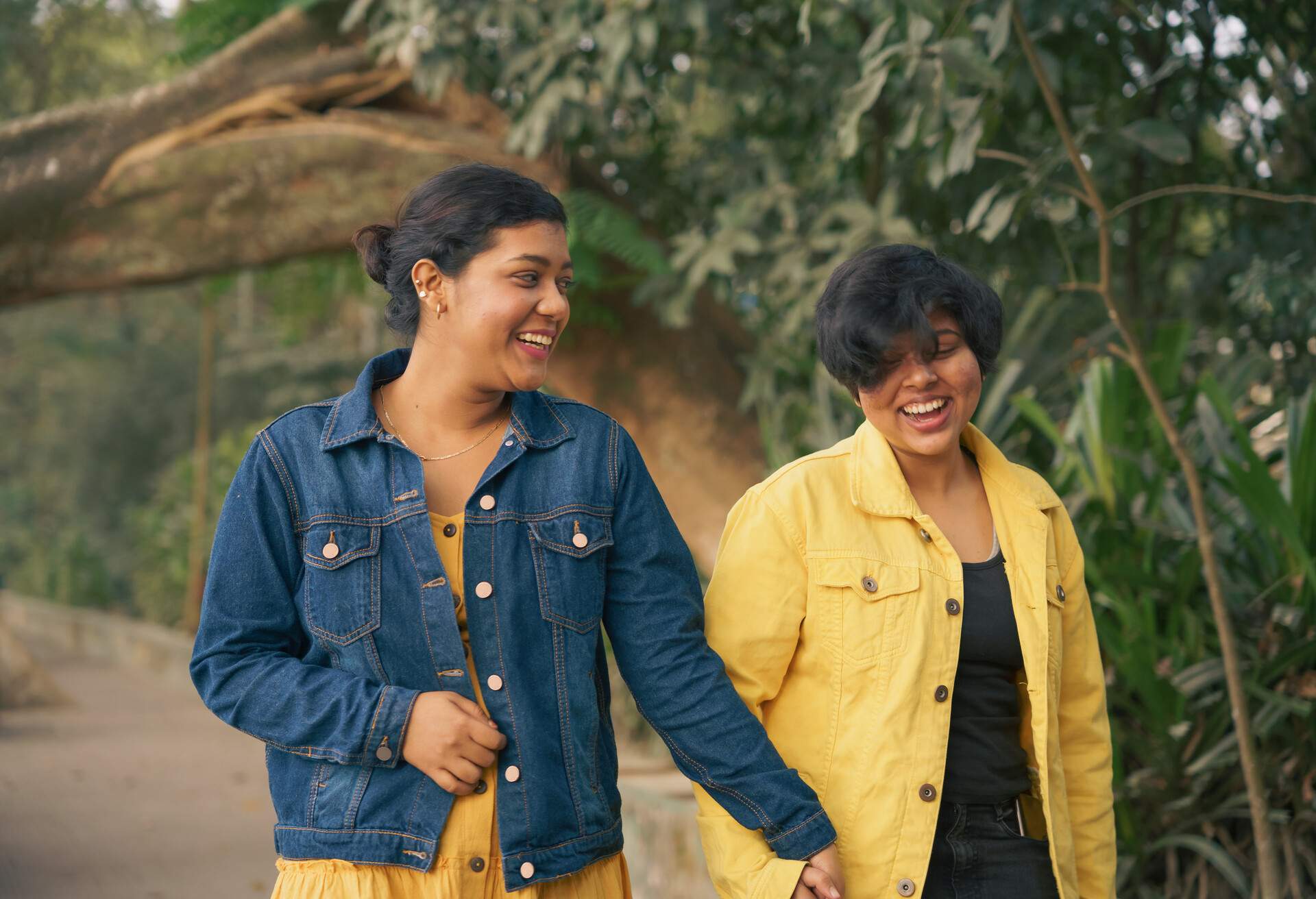
This temple is the world centre of Tantric worship and is one of the four main shrines of Shaktism, known as the Shakti Peethas. It can be found on the Nilachal Hill in Guwahati, Assam.
The Womb of the Goddess
Kamakhya Temple is believed to house the womb of the Goddess Sati, known as the “garbhagriha”. It’s a temple devoted to the celebration of womanhood. The nearby Brahmaputra River turns red due to sediment each year in June, which has led believers to mark this as a sign that the Goddess is menstruating. Thus pilgrims make their way there to honour the ability of women to give birth.
Mahabodhi Temple, Bihar
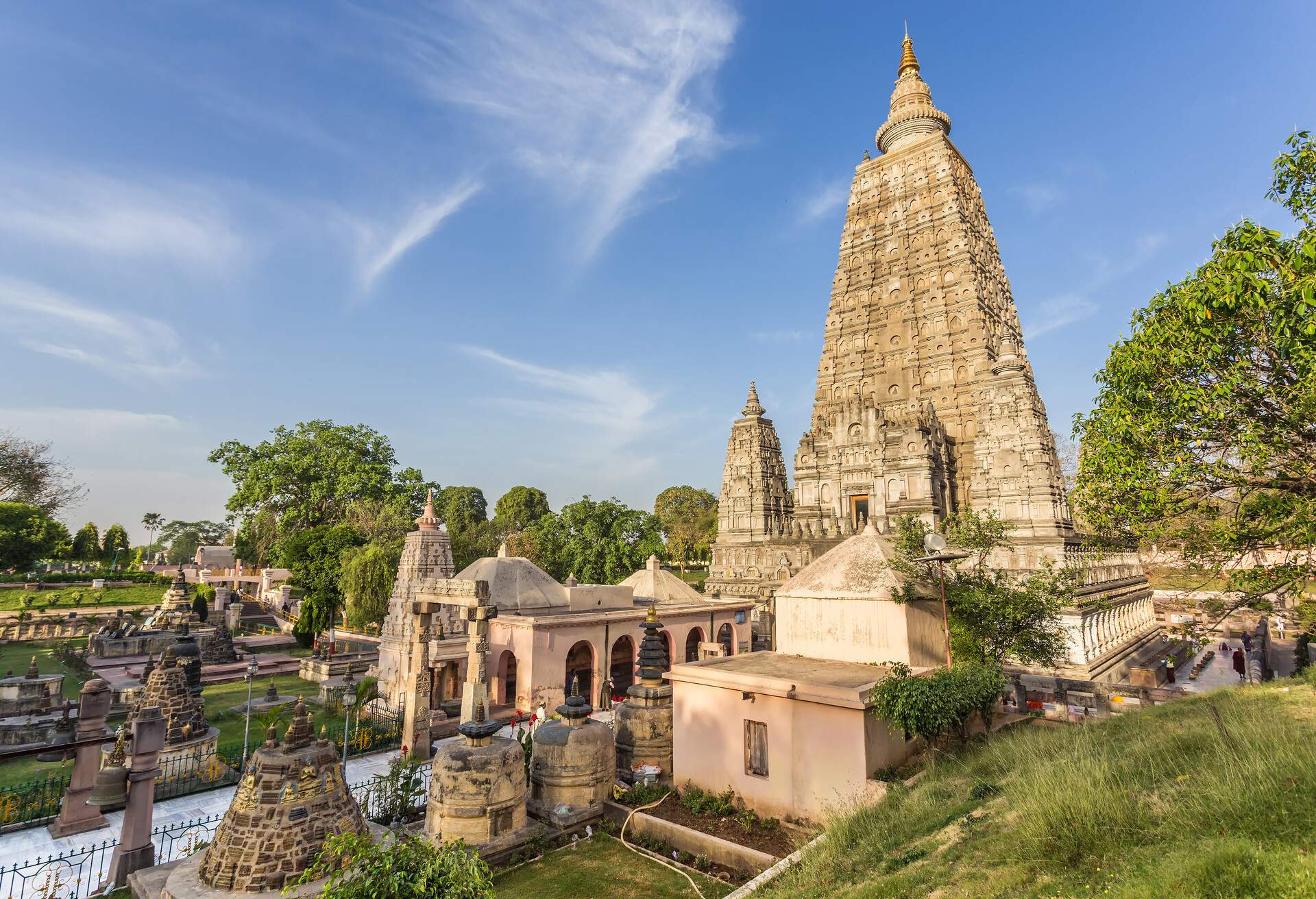
Travel to the age-old city of Bodh Gaya in the Bihar region to view Mahabodhi Temple. Its name translates as “the great awakening”, and it’s the only one remaining of around 84,000 temples and shrines built by King Ashoka The Great.
Attaining Buddhist Nirvana
The temple stands on the site where Prince Siddharth is believed to have reached the state of nirvana, thus becoming Lord Buddha. This makes it one of the most important Buddhist temples in India. Also known as Mahabodhi Mahavira, it is a hugely significant pilgrimage destination, and is also a UNESCO World Heritage Site. Its unique architectural style makes an excellent tourist attraction to put on your list.
Iskcon Temple, Uttar Pradesh
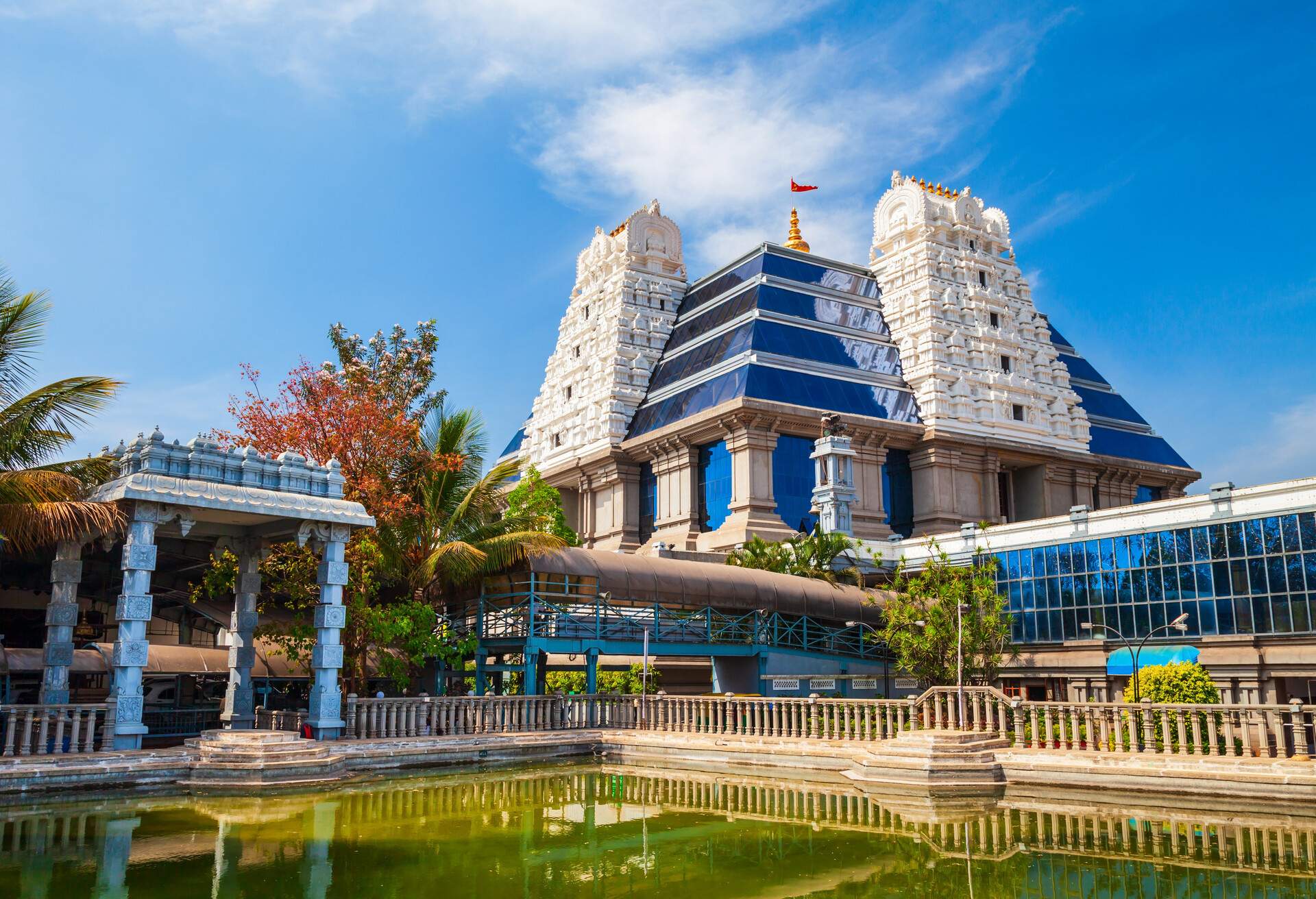
Iskcon Temple, built in 1975, is the centre of the International Society for Krishna Consciousness, from whence it derives the acronym of its name. It also goes by the name of Krishna Balaram Mandir.
The home of Lord Krishna
This temple is in the Hindu holy land of Vrindavan, and is the principle place of worship for the Gaudiya Vaishnava sect. Venture inside and you can view the idols of Krishna, Balarama, and Radha, as well as one of Swami Prabhupada, the founder of the ISKCON movement. The temple is renowned in India for its extreme standards of cleanliness, as dictated by the belief system.
More exotic holiday ideas

If you’re looking for holidays in other countries with ancient histories, you can also read our guides to the Best Places to Visit in Turkey or the Best Places to Visit in Dubai. For something completely different, you can also check out the Best Places to Visit in Australia.
